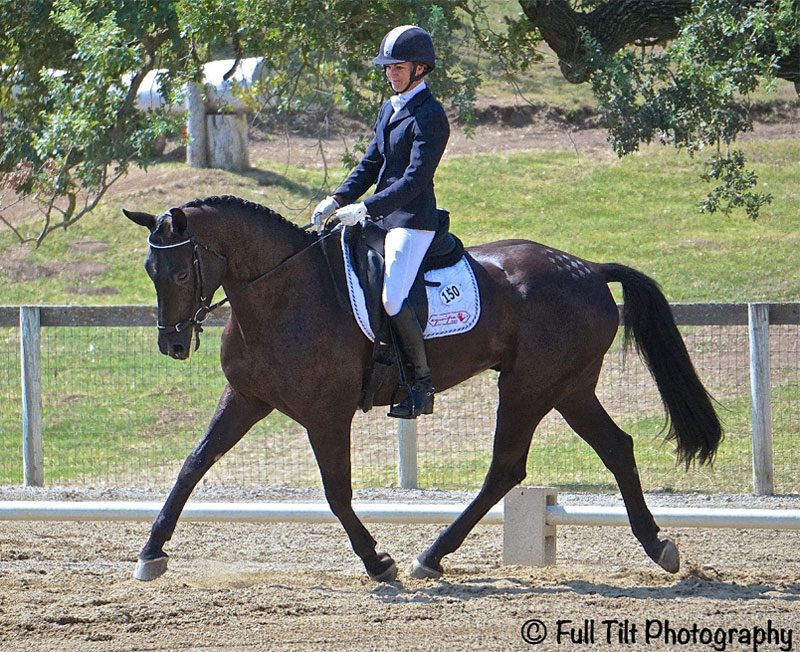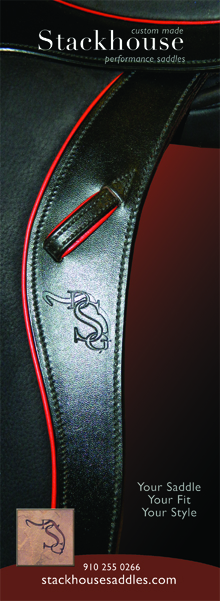Search the Site
The Mysterious Half Halt (Current freebie!)

I find myself rarely using the term "half halt" as I teach, as I find that no matter how much I tell riders that it is not the "pull and release on the reins" that so many riders seem to believe it is, that's often what they do unconsciously when I do say half halt. A half halt should not kill any of the energy in the horse's stride, but rather rebalance it. Here's how to do it:
Stretch up tall through your entire spine, engaging your core muscles to "bear down" on your seat bones. And wrap your legs lightly around your horse as if giving him a "hug", to send him forward into the closed fingers of your hands, which then "receive" the energy. Then soften that aid, without collapsing your core or losing the connection with the outside rein.
Many will say, "Never use both the hand and leg at exactly the same time." And that is correct. The seat and leg should ever so slightly precede the hand in the half halt. And the hand isn't actively being "used" to do anything other than to hold the front door closed to the degree required. (More on the front door analogy here.) If strength is needed... which ideally it isn't... strength comes from the rider's seat, not their arms.
A helpful way for riders to feel how to "bear down" properly is to exhale while stretching their upper body up tall. And it is sometimes necessary to briefly strengthen the seat aid by slightly tipping the pelvis. Imagine you are sitting on the edge of a four legged wooden kitchen chair, and without leaning back, tip your pelvis to slightly bring the back two legs of the chair off of the floor. I tell riders to "push their stomach towards their hands". This can be a useful quick, temporary aid to increase engagement of the horse's hind legs. Note that your hands should still only receive the energy, and not act backwards in any way.
The horse that responds correctly to a half halt will shift his weight more back over his hindquarters, by engaging and lowering his hocks and pelvis. As a result, he will be in greater self carriage and lighter in your hands.
So what DO I actually say when teaching when I want my riders to half halt? Usually "engage the hind legs."
When should a rider half halt? Whenever the horse needs more engagement to be better balanced, which is often. It is helpful to half halt, once or several times - until the horse's balance has been sufficiently improved, before every transition, turn, or movement.
How strong should a half halt be? A half halt can be extreme, or it can be extremely subtle. Think of a scale from 1 to 10. Where a 10 would be a halt/rein back and trot off. And a 1 would be so subtle that it would not be perceptible. Most will fall somewhere in the range of 1 to 3 on that scale.
A correctly ridden half halt will increase the engagement of the hind legs, and therefore increase the energy within the stride. Even when that half halt is fairly high up on the scale, where the horse slows his speed significantly, the energy within the stride should be increased. It can be helpful for riders to visualize a piaffe when they half halt in trot before a transition to walk or halt, so that they are reminded to keep the hindquarters active. Or to think "canter in place" while preparing for a downward transition from canter to trot.
And most importantly, always remember to release the half halt aids after each momentary half halt. Which shows the horse's self carriage, and encourages him to continue to carry himself properly on his own.
I know this is a confusing topic for some riders, so feel free to ask your questions below!






